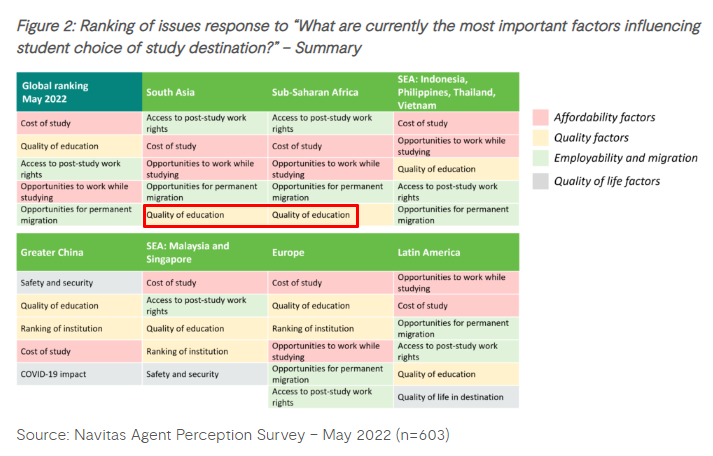In May, The AFR reported that the volume of fraudulent student visa applications had soared, dominated by India and Nepal.
Former regulator for the vocational training sector, Claire Field, explained that last year’s decision to lift restrictions on the number of hours international students could work had attracted swathes of non-genuine students. In turn, “there are allegations of significant visa fraud in India”, which “as a former regulator for the vocational training sector, [has] the alarm bells in my head are ringing loudly”.
In June, the Indian Express reported that Australia’s Home Affairs department had received hundreds of fraudulent student visa applications from India’s Punjab and Haryana regions. These fraudulent applications were further encouraged by Australia’s loosening of entry requirements for Indian students by only requiring them to pay six months’ fees in advance and not requiring them to pay for living expenses upfront.
Yesterday, The AFR reported that a “flood of Nepalese nationals entering Australia on vocational student visas” had been “brought to an abrupt halt after concerns were raised about false documentation and non-genuine reasons to travel”:
Immigration expert Abul Rizvi said… “they were just using student visas as work visas.”
The Australian Financial Review understands fraudulent documentation was found in about 60 per cent of Nepalese student visa applications. The second-worst culprit for false documentation was Thailand.
Concerns were raised previously that the Morrison government’s removal last December of a cap on the number of hours students can work had triggered a flood of application for student visas…
Jon Chew, global head of insights and analytics for listed education provider Navitas, has previously noted that visa applications from Nepal were double for higher education and triple for the vocational education sector compared to 2019, when working hours were capped at 40 hours a fortnight.
“That’s not to cast aspersions on students, whether they are here to study or to work, but that is a phenomenal jump”…
The overwhelming majority of ‘students’ from India and Nepal come to Australia for work rights and permanent residency, not for education.
This was made abundantly clear by the latest survey of education agents by education company Navitas, which found that work rights and residency are the top concerns of South Asian students, whereas quality of education ranked last:

As part of the Jobs & Skills Summit, the Albanese Government further expanded work rights for international students, knowing full well that it will lead to an avalanche of non-genuine visa applications from poorer nations:
The Government will:
- Increase the duration of post study work rights by allowing two additional years of stay for recent graduates with select degrees in areas of verified skills shortages to strengthen the pipeline of skilled labour in Australia, informed by advice from a working group
- Extend the relaxation of work restrictions for student and training visa holders until 30 June 2023 to help ease skills and labour shortages
The working group will include representatives from the Council of International Education, the National Tertiary Education Union, and Universities Australia. Thus, it is geared toward expanding student numbers, not improving quality.
All of which proves, yet again, that ‘international education’ is really a people-importing immigration industry rather than a genuine education export industry.
Rather than lowering the quality bar even further to boost numbers, Labor should instead have targeted a smaller intake of higher quality students by:
- Lifting entry standards (particularly English-language proficiency);
- Lifting financial requirements needed to enter Australia; and
- Removing the explicit link between studying, work rights and permanent residency.
These reforms would raise student quality, would lift export revenues per student, would improve wages and conditions in the labour market, and would reduce enrolment numbers to sensible and sustainable levels, in turn improving quality and the experience for local students and reducing population pressures.
Sadly, the Albanese Government did the opposite because they knew that if work rights and permanent residency were scaled back, the numbers of students arriving would collapse. And so too would Labor’s Big Australia agenda.

